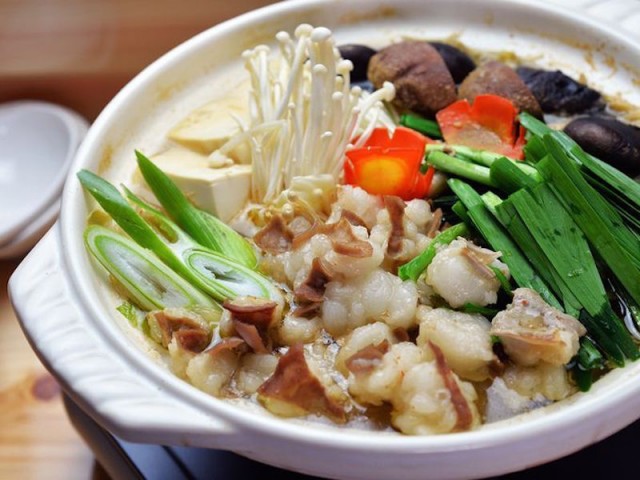
Speaking of winter in Japan, one thing to do is enjoy Japanese hot pots, ‘Nabe’ (鍋)! It is absolutely necessary for the Japanese to have hot pots to survive the cold winter. We normally put a pot over a portable burner on the table and boil seafood, vegetables, meat and other ingredients depending on personal taste. A single hot pot is shared with friends and families, circling around the dining table. Everyone takes a portion and puts it in their serving bowl. “Nabepa”, short for nabe party, is especially popular among younger people. Friends can freely enjoy themselves in a fun atmosphere and eat a lot.
Traditionally Japanese clay pots, called ‘Donabe’ are used, however, some dishes like ‘Sukiyaki’ use iron pots.
Photo credit. Donabe.
Japanese hot pots come in a variety of style. When I hear “hot pot”, I think of ‘yose nabe’, boiling in soup stock, ‘dasijiru’. Because Yose Nabe uses regional foods, soup stock and ingredients are different, depending on where it’s being eaten. Basically, vegetables, mushrooms, fish, meat and tofu can be main ingredients. I prefer cooking many vegetables with chicken for the hot pot dishes. When you’re almost done eating, I recommend eating Udon noodle, boiling it in the leftover soup.
‘Mizutaki’ is similar with yosenabe. The only difference is yosenabe is boiled in water with chicken, tofu and vegetables and then dipped in ponzu sauce before eating. Ponzu sauce is a convenient sauce combining both citrus and soy sauce. But actually some mizutaki hot pots use the stock soup, so it is vague to distinguish these two styles of hot pot.
Photo credit. Yosenabe.
Recently, unique Japanese hot pot dishes also attract attention such as curry hot pot, tomato & cheese hot pot and soy milk hot pot, becoming popular among families and younger people.
This video introduces details about Japnese hot pots if you want to know more.
Japanese hot pots are not only for warming up your body but also really easy to cook. If you have basic seasonings for Japanese food, anyone can make it anytime. Why don’t you cook Japanese hot pot to enjoy this winter, using this Yosenabe recipe?
Also, there are many kinds of hot pot soups you can buy in Japan. Actually, I used to use the hot pot soup sold in the supermarket when I cooked at home back in Japan. If you have a plan to go to Japan in winter, check the supermarket to discover your favorite hot pot soup flavour.